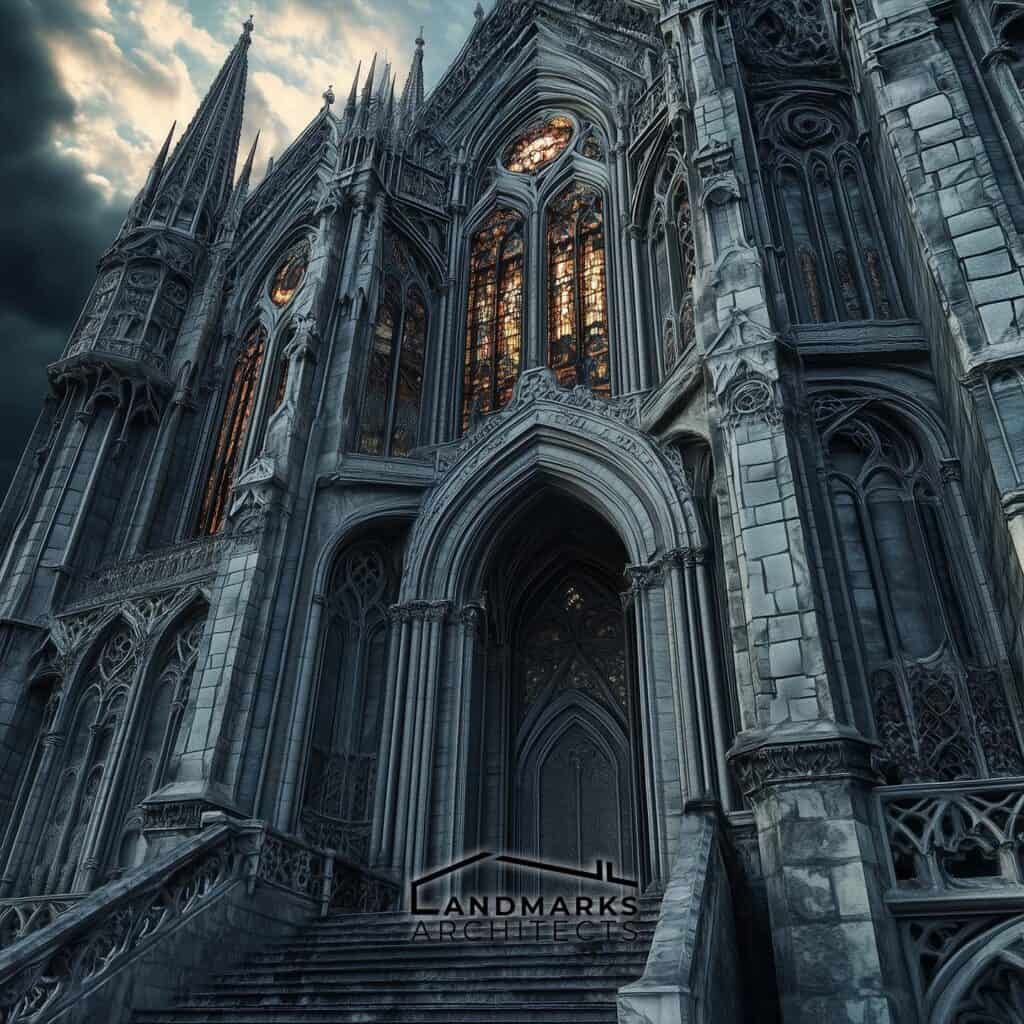

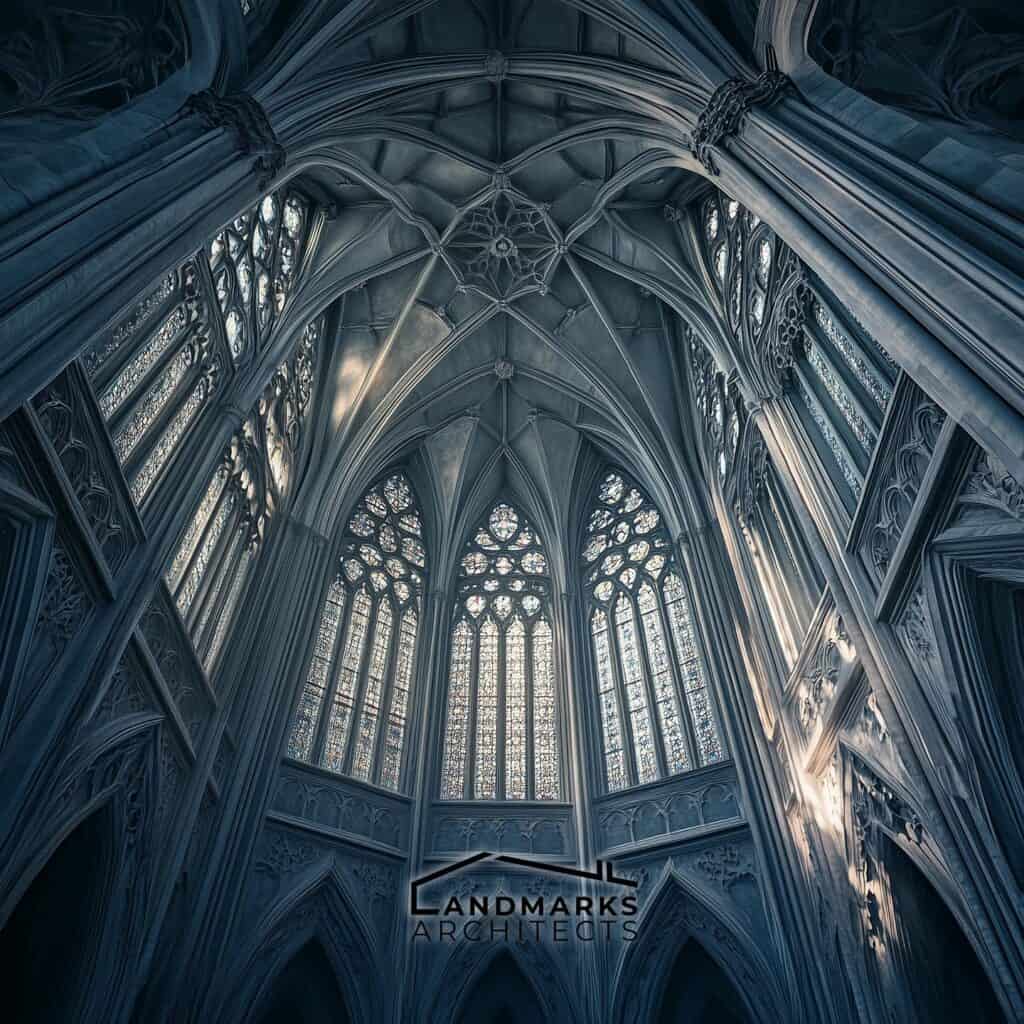
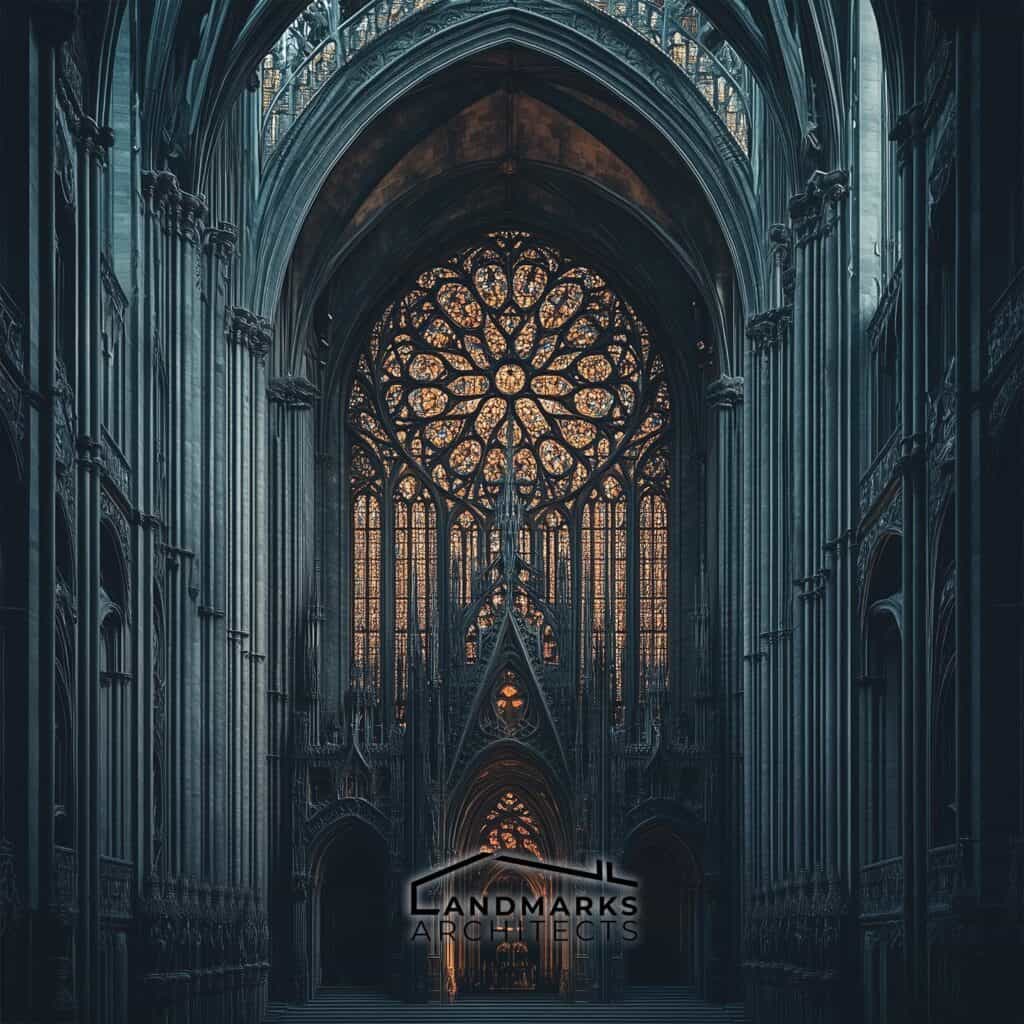
Have you ever marveled at the towering spires and colorful windows of Gothic cathedrals? These incredible buildings have amazed people for centuries with their unique style. If you’re curious about what makes Gothic architecture so special, you’re in the right place.
As someone interested in architecture, you should know the key features that make Gothic buildings stand out. At Landmarks Architect, we’re excited to share our insights.
In this article, we’ll cover:
- The five essential elements of Gothic architecture
- How these features changed building design in the Middle Ages
- Famous examples of Gothic buildings that showcase these elements
Ready to discover the secrets behind Gothic architecture? Let’s explore pointed arches, ribbed vaults, flying buttresses, stained glass windows, and detailed decorations, and see how they come together in Gothic style architecture to create the stunning beauty of Gothic cathedrals.
Gothic architecture is known for its unique features, which make Gothic cathedrals and churches stand out. This style started in the 12th century and changed how buildings were made, distinguishing itself from other types of architectural styles, such as Romanesque and Classical architecture.
Here’s a look at the five key elements of Gothic-style architecture.
1. Pointed Arches
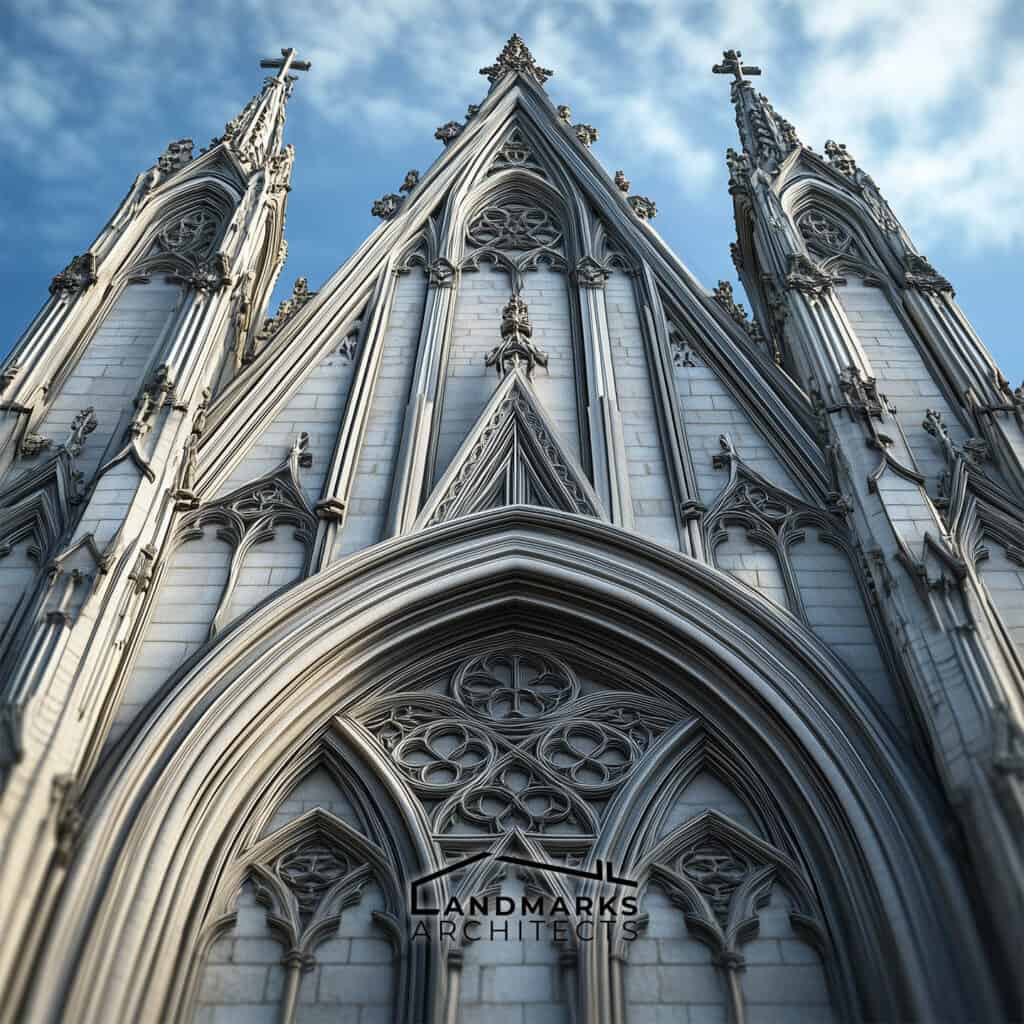
Pointed arches are a main feature of Gothic architecture.
- Strong Support: Pointed arches help support the building by efficiently spreading out the weight. This allows Gothic buildings to be taller with thinner walls.
- Tall Look: They create a sense of height and grace, distinct from the rounded arches of Romanesque architecture.

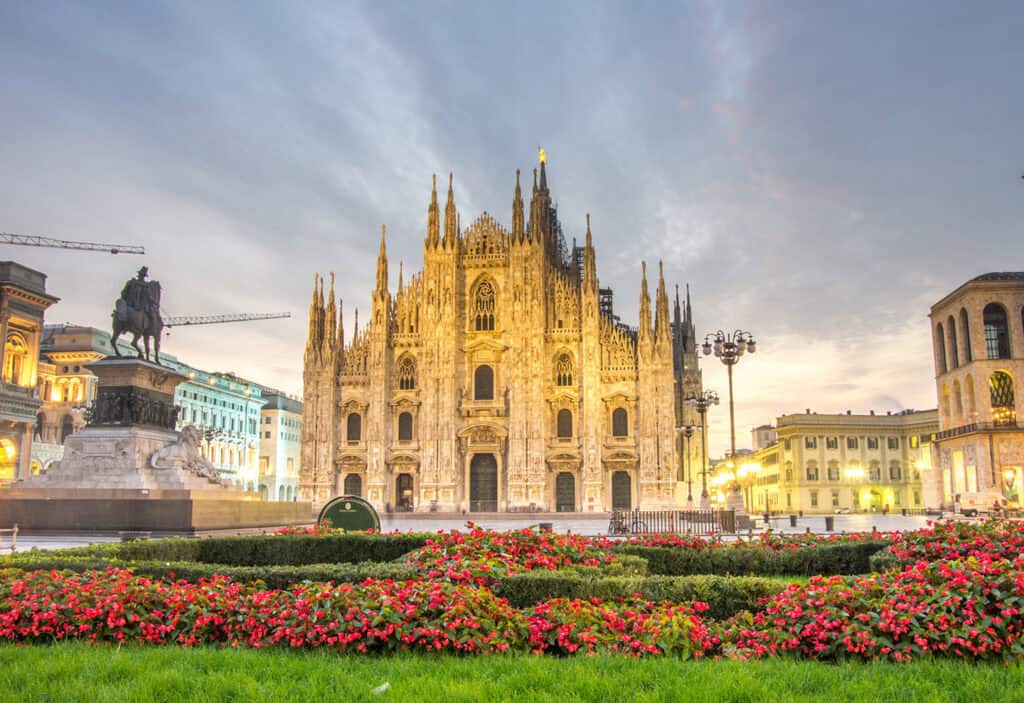
Examples:
- Notre-Dame de Paris: This famous Roman Catholic church in Paris showcases beautiful pointed arches, epitomizing the Gothic style.
- Milan Cathedral: Renowned for its impressive pointed arches and other Gothic elements, this cathedral exemplifies the grandeur of late Gothic architecture while also incorporating features from later styles.
2. Ribbed Vaults

Ribbed vaults are important in Gothic architecture for creating large, open spaces.
- Strong Ceilings: Ribbed vaults use crossing arches to support the ceiling, allowing Gothic cathedrals to have high and wide interiors.
- Decorative: They enable complex ceiling designs typical of the Gothic style, adding both structural innovation and aesthetic complexity.
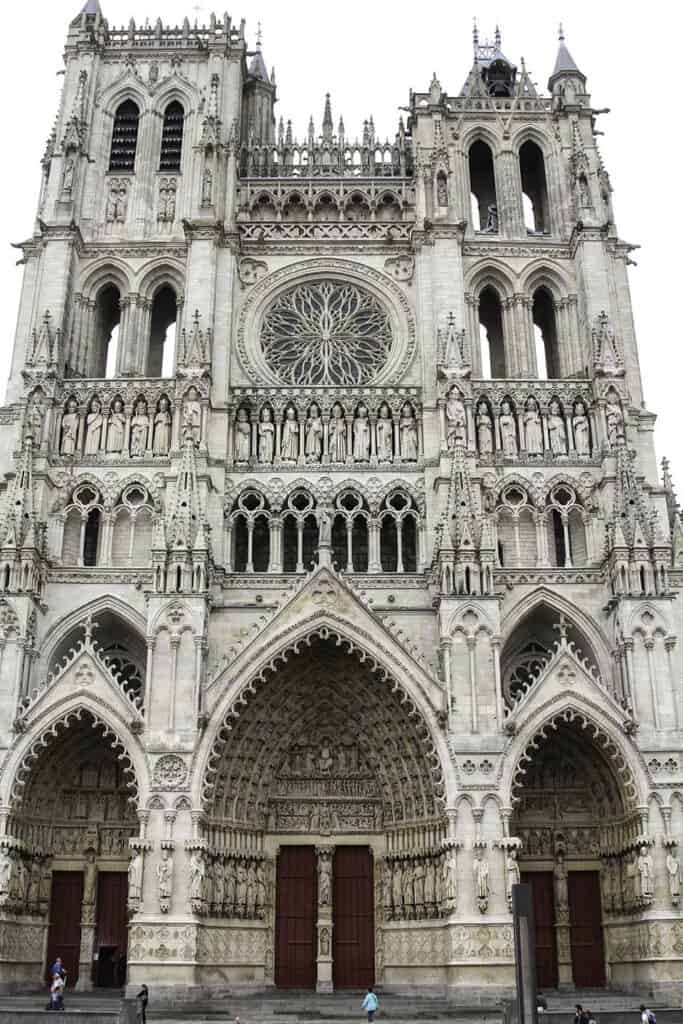
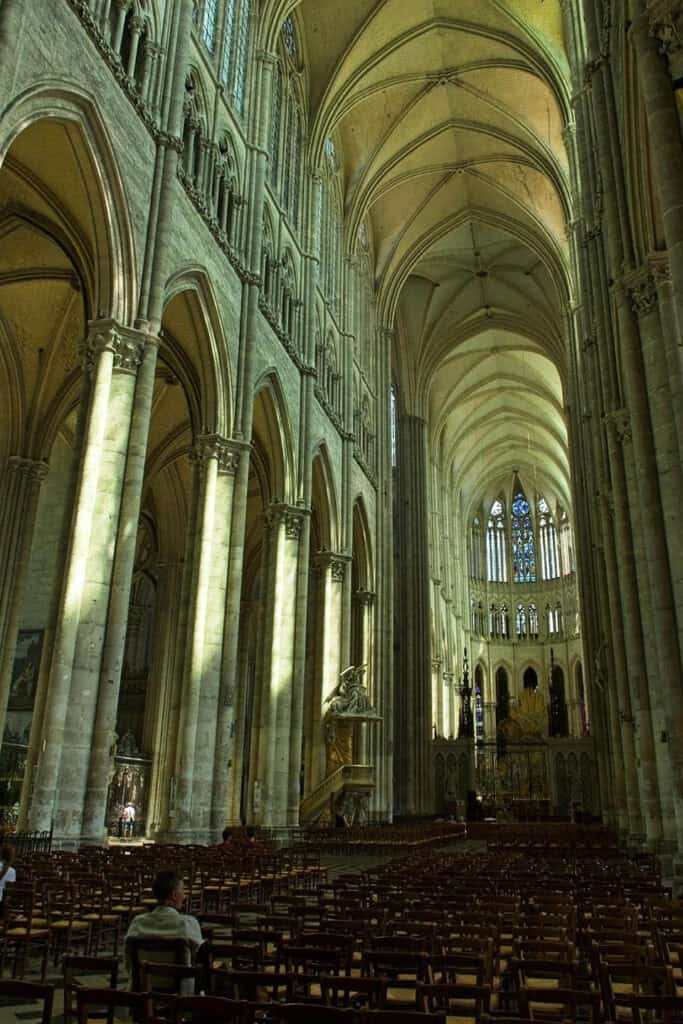
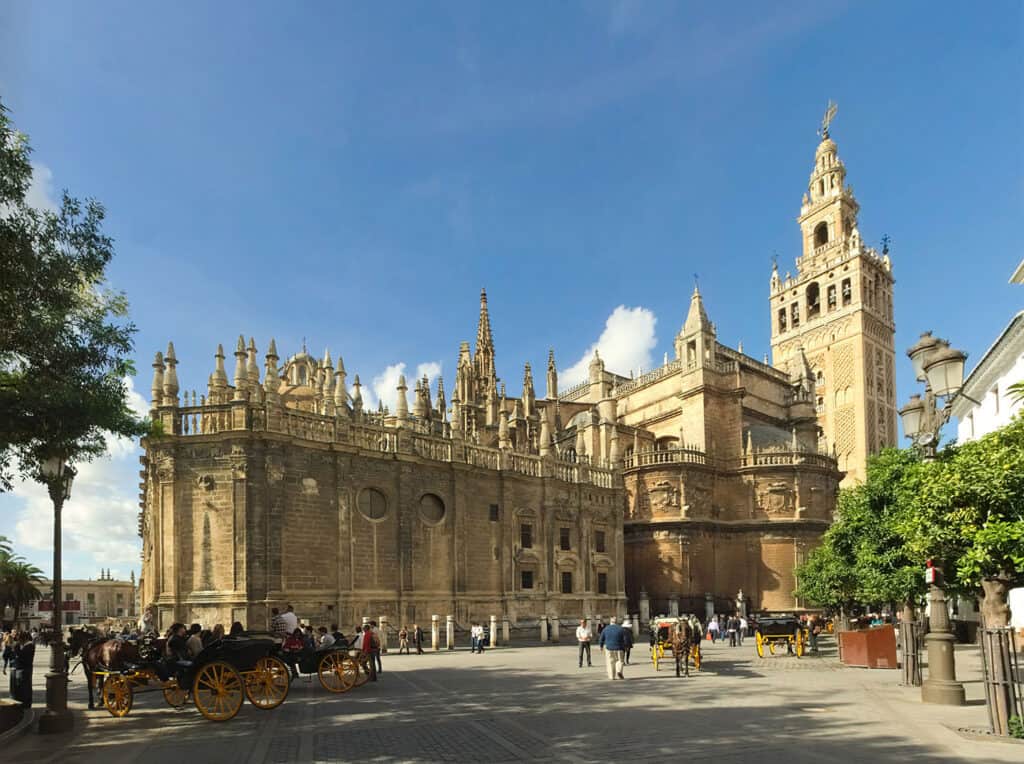
Examples:
- Amiens Cathedral: Features robust ribbed vaults that support its tall nave, showcasing Gothic architectural innovation.
- Seville Cathedral: Known for its extensive ribbed vaults, which help create one of the largest and most impressive Gothic interiors in the world.
See Also Seville Spain Architecture: A Tour of 8 City’s Iconic Structures
3. Flying Buttresses
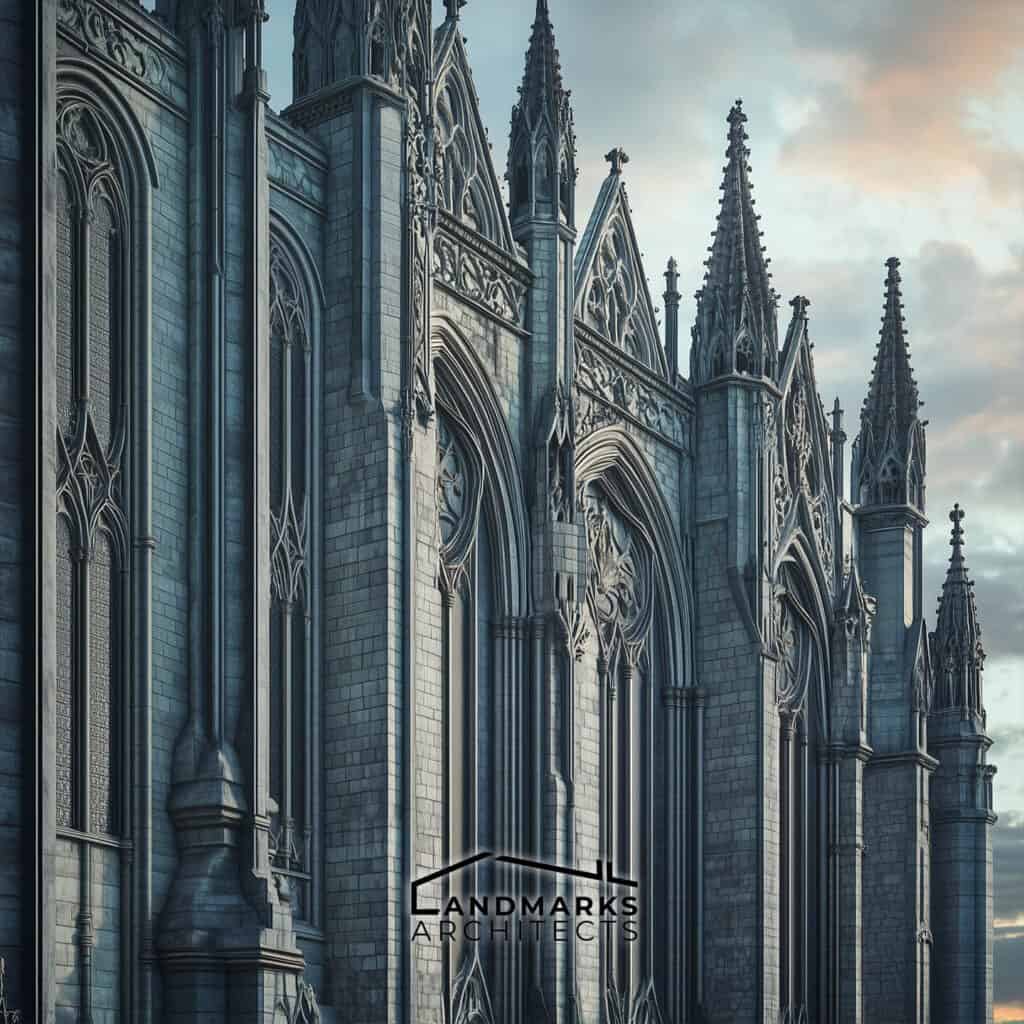
Flying buttresses are essential for the structural integrity and aesthetic of Gothic architecture.
- Support from Afar: They support the walls and ceilings of the building from a distance, allowing for thinner walls and larger windows.
- Elegant Design: Their arched shapes add to the beauty and visual complexity of Gothic buildings.

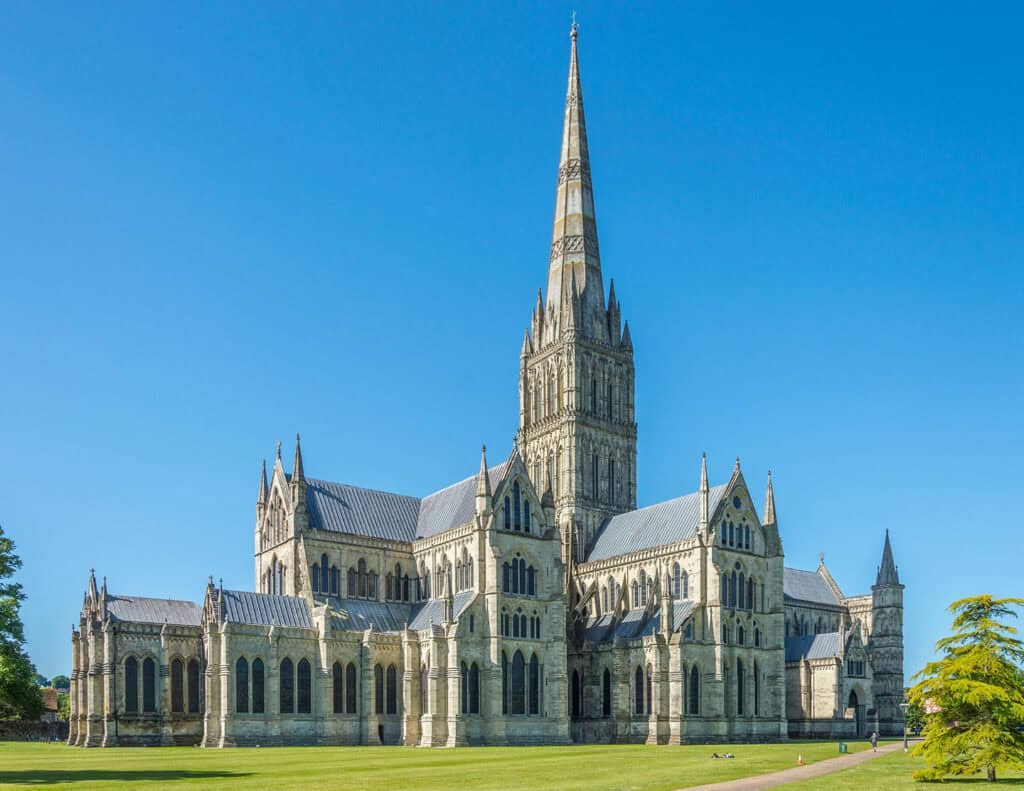
Examples:
- Basilica of Saint-Denis: One of the earliest examples of flying buttresses, marking a significant development in Gothic architecture. Although not fully developed here, the concept shaped future Gothic structures.
- Salisbury Cathedral: Features fully developed flying buttresses that help support its tall spire and large windows, showcasing the effectiveness of this Gothic architectural innovation.
4. Large Stained Glass Windows
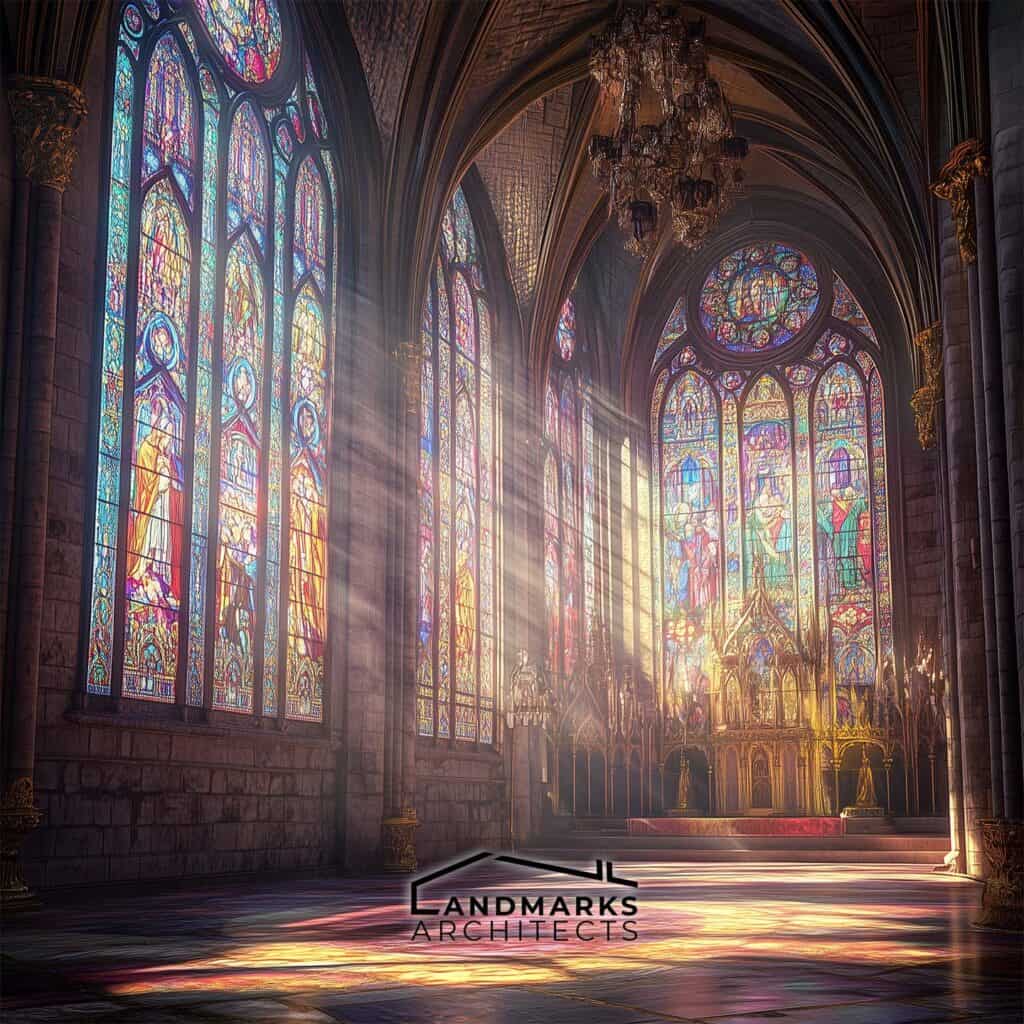
Large stained glass windows are a signature element of Gothic architecture.
- Bright and Colorful: They allow a lot of natural light to enter and fill the interior with vibrant colors.
- Artistic Scenes: These windows often depict biblical stories and religious figures, adding to the building’s beauty and serving an educational purpose.
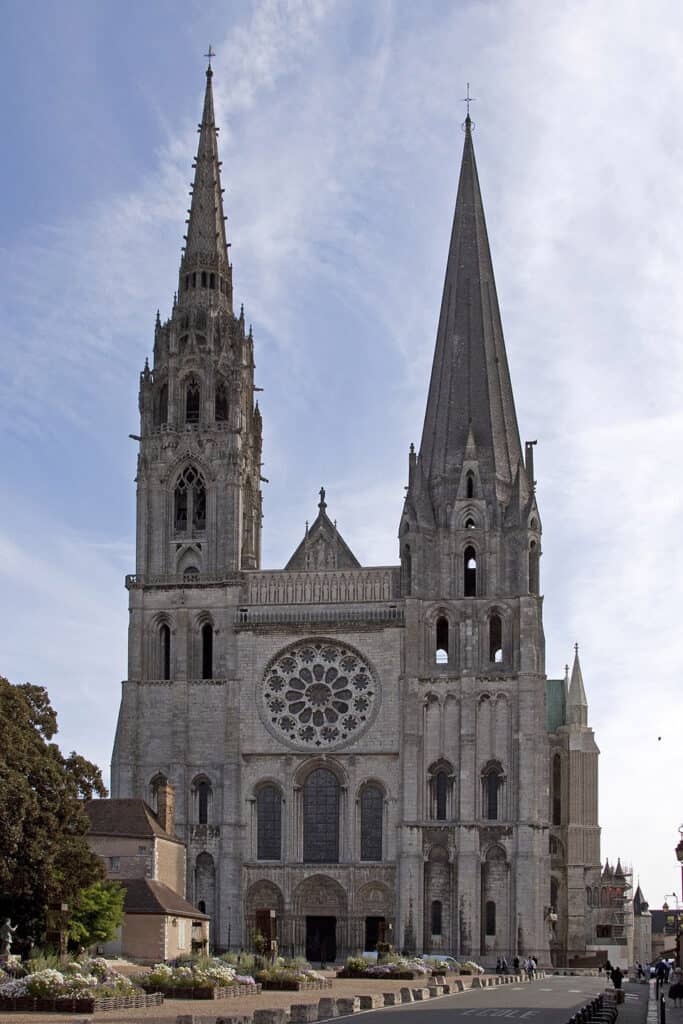
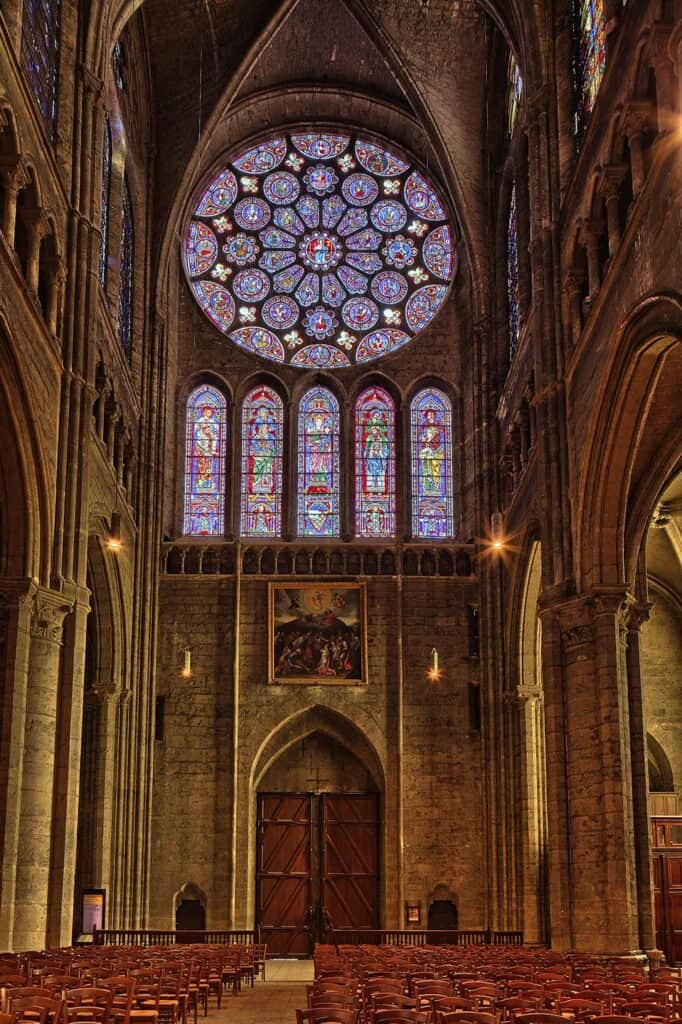
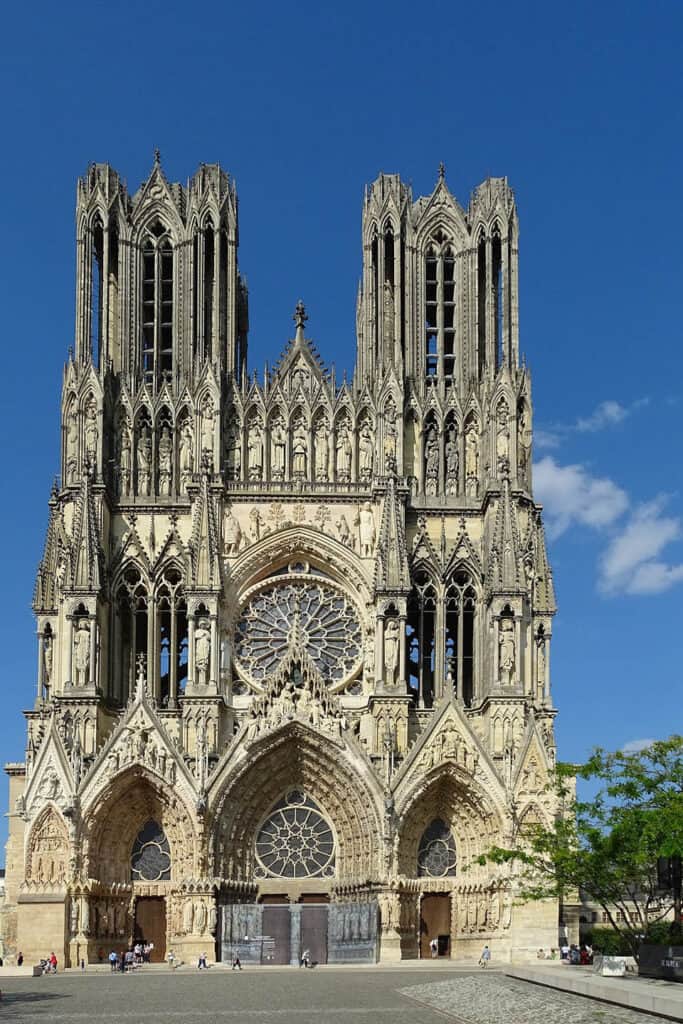
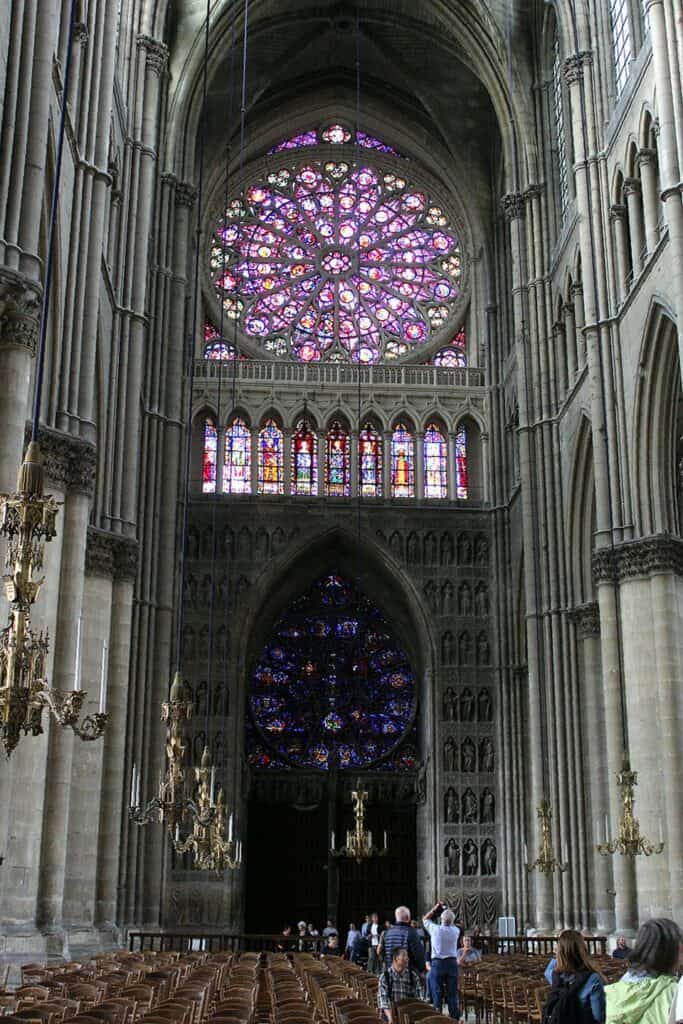
Examples:
- Chartres Cathedral: Renowned for its vast collection of large, colorful stained glass windows, many dating back to the 12th and 13th centuries.
- Reims Cathedral: Famous for its beautiful stained glass windows, which enhance the Gothic character of the cathedral, including both medieval and modern examples.
5. Ornamentation and Decoration
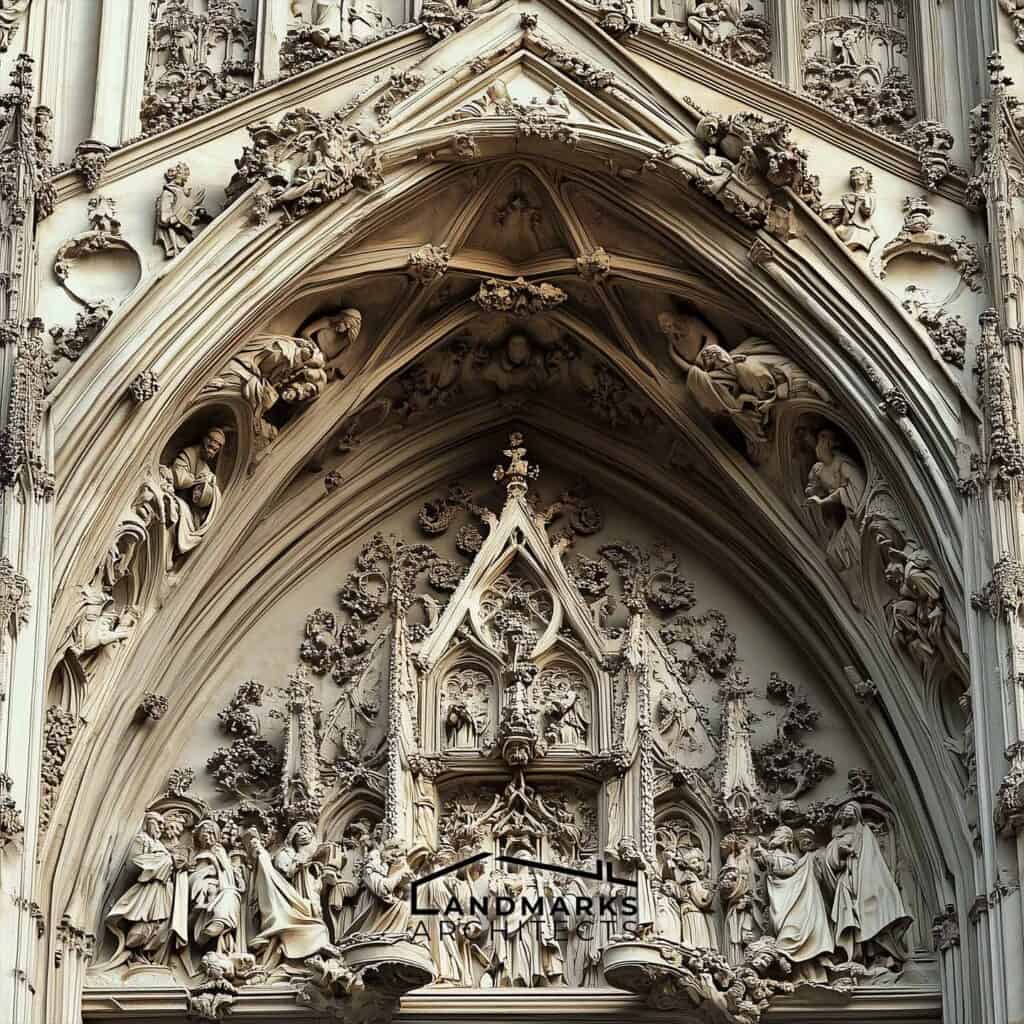
Gothic buildings are known for their detailed decorations.
- Intricate Carvings: Gothic cathedrals feature detailed stone carvings on both the outside and inside, often depicting religious figures, scenes, and patterns.
- Flamboyant Style: Later Gothic styles, like the Flamboyant style (primarily in France), use elaborate and sweeping curves and intricate tracery.
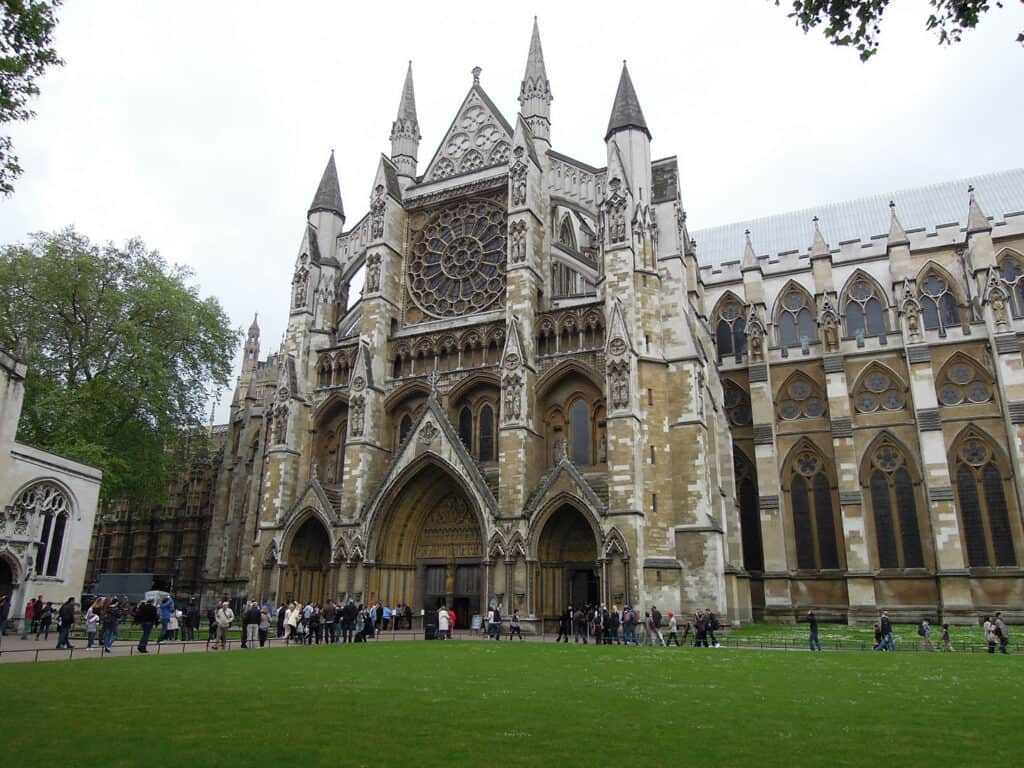
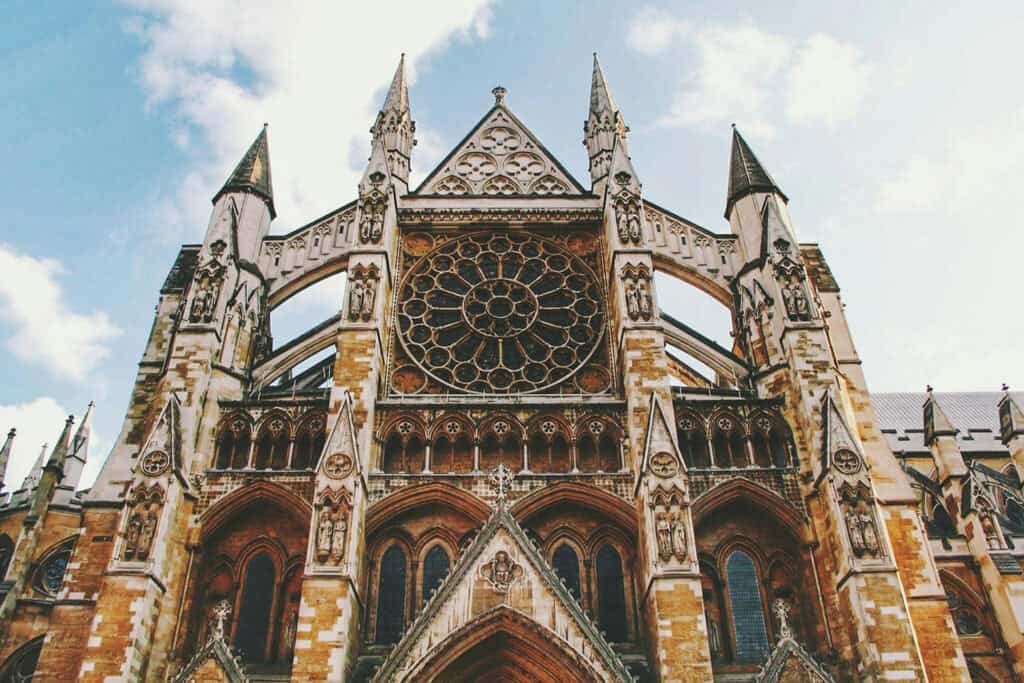
Examples:
- Westminster Abbey: An example of English Gothic architecture with detailed stone carvings and ornate designs, particularly reflecting the Early English and Perpendicular Gothic styles.
What Are the 5 Essential Elements of Gothic Architecture? A Recap
Gothic architecture is defined by its five key elements: pointed arches, ribbed vaults, flying buttresses, large stained glass windows, and intricate decorations.
These features revolutionized building design in the Middle Ages, setting Gothic apart as a distinct form of European-style architecture. They allowed for taller structures, more natural light, and richly decorated interiors.
Each element contributes to the unique beauty and strength of Gothic cathedrals, making them some of the most iconic buildings in history.









